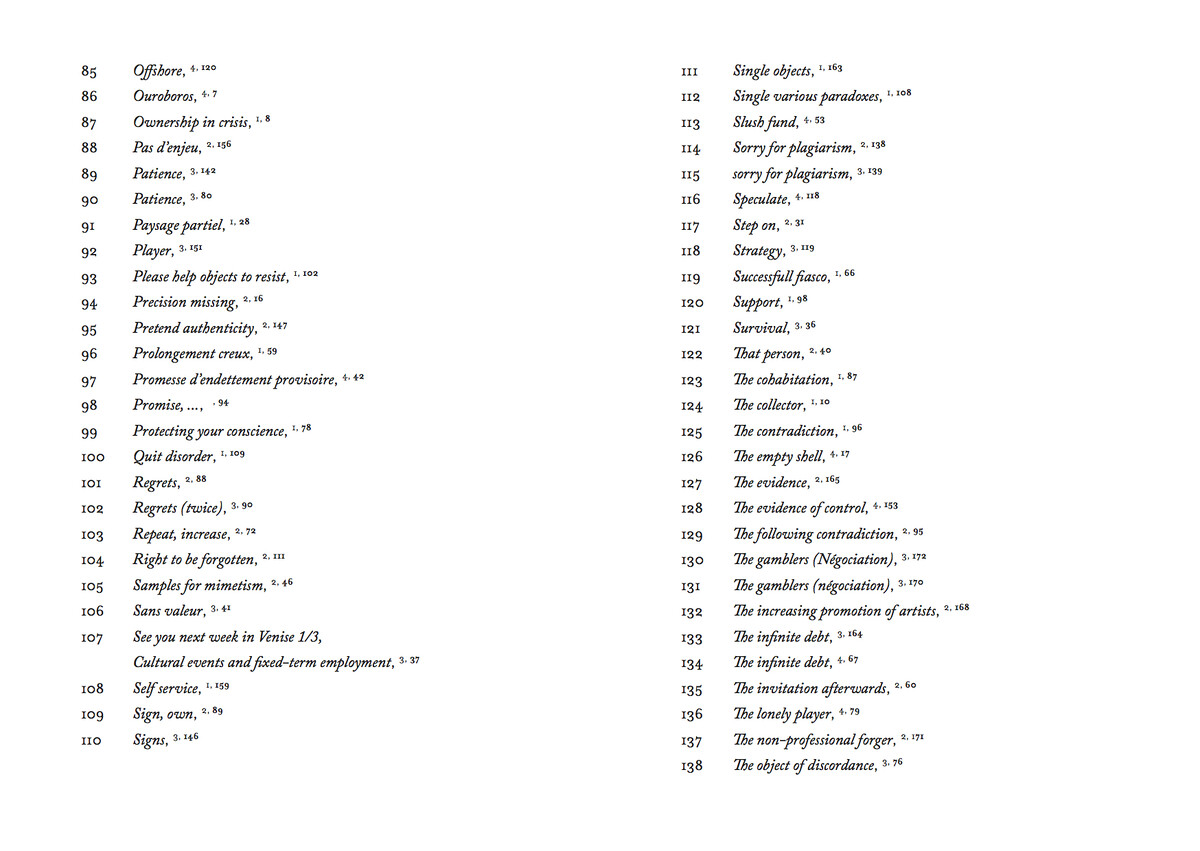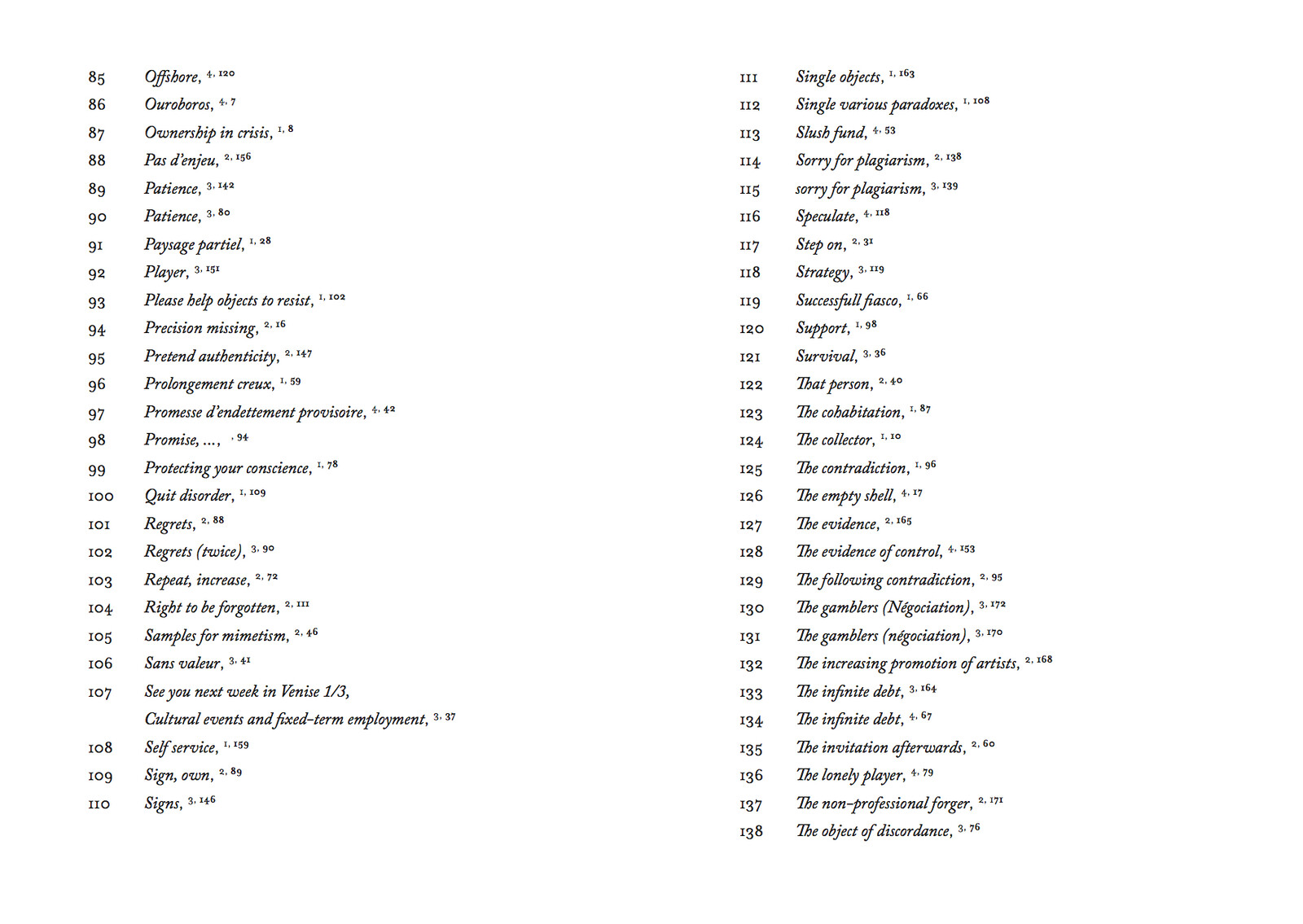Once a month, art-agenda and TextWork, editorial platform of the Ricard Foundation, jointly publish a Meta text. Here, Rachel Valinsky reflects on her monographic essay on Eva Barto’s work, “Eva Barto’s Gamble.”
There’s trouble in achieving writing’s focus when its objects are most evasive. A year ago, I was writing about an artist, Eva Barto, whose work is willfully fugitive: few photographs of it exist or are available, while its operations and internal mechanisms are complex, inscribed within set logics and systems though often upturning or diverting them from within. I went to visit her in Paris and we spent hours talking about her work in a café near Canal Saint-Martin and continued to send her questions to which she graciously responded over Skype and email after I returned to New York. Finally, I had filled myself to the brim with details of process, form, and reference. I paid intense attention to relations between things brought into focus by someone other than myself, but offered to me so that they might take on, through the text I was writing, some complementary expression and precision. I looked for what poet Lyn Hejinian once described as the writer’s paradise when I finally sat down to write: a “flowering focus on a distinct infinity.”1
The problem is that writing comes after. Like in one of Eva’s exhibitions, you enter the gallery late to the party. You’ve missed whatever came before, something you sense has happened, but now the walls are bare and mute. This is what you might have found in a 2016 exhibition at gb agency, Paris, titled “The Infinite Debt.” The gallery had recently hosted a showroom for Fashion Week. Eva’s exhibition presented itself as and in the aftermath—there were some leftover objects like a clothing rack, some hangers, cigarette butts strewn on the ground—and at the same time, these clues were only pretexts, floating at the surface of a complex fiction revolving around a shell company (Trust), its lead character (T.I.N.A.), the suggestive but mysterious symbol of a snake swallowing its own tail (the Ouroboros), and a game of speculation whose stakes and objects were unknown.
“A world can whisper from a half-lived sensibility,” writes anthropologist Kathleen Stewart.2 Her commitment to writing toward the precision of compositions, the perception and experience of events, and the palpability and tenuousness of form, has offered me tools for writing here. You have to be attuned to a world’s atmospherics, develop an affective analytics for how things come to matter, not just in their nascent manifestations or in the immediate moment of their reception, but also and especially, as Stewart’s nimble prose demonstrates, in the intensities and forms they take in and through writing. There is a finely-tuned analytic for what matters in Eva’s work but viewers aren’t always privy to it. In many ways, she invites a game of betting where the viewer may miss the mark. That’s one part of Eva’s “gamble.” The first encounter with her work is often missed, left unfulfilled, eliciting instead all kinds of unexpected relations. Often, it is experienced as a thing half-lived. And if its reception is delayed, documentary images can’t help us: per her request, they are not to be reproduced.
Writing about Eva’s work, I found few rhetorical gestures to fall back on. What position to write from remained an open question. Formal analysis had to take another form, become more speculative at times, focusing on operations and effects over the illusion of consistency. For the 2016 Atelier de Rennes, Eva made a book (L’abandon au profit [Give Way to Profit], 2016). On the cover were logos of corporate and cultural funders of the Biennale. Its contents—correspondence between artists, curators, and administrators regarding budgetary and fiscal matters—were largely redacted. She ripped the spine in two, so that each half could circulate free from its unifying binding. It was dispersed, moving as whisper or rumor, as myth, always on the brink of lapsing into unknowability. How does that kind of object make itself known, and what exactly do you do with it? I itched to grasp an object so recalcitrant, to follow its stirrings and movements, how it passed through readers’ hands, of which so little can be known.
Lyn Hejinian, “The Rejection of Closure (1983),” in The Language of Inquiry (Berkeley: University of California Press, 2000), 42.
Kathleen Stewart, “Atmospheric Attunements,” Rubric (Issue 1, 2010): 6.


